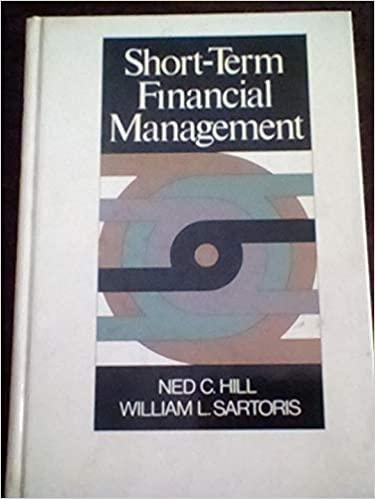Question
You are the manager of a technology fund that has an expected rate of return of 11% and a standard deviation of 17%. Your fund
You are the manager of a technology fund that has an expected rate of return of 11% and a standard
deviation of 17%. Your fund is currently invested in the following stocks:
Fund Composition
FB 45%
NFLX 35%
GOOG 20%
The T-bill rate is 2%. In addition, you have a client who is currently investing 40% of her wealth in your fund and the rest in a T-bill money market fund.
a) What are the expected return and the standard deviation of your clients portfolio? [4 marks]
b) What are the weights of your clients overall portfolio in each of the stocks included in your fund and in T-bills?
c) What is the reward-to-variability ratio (i.e., the Sharpe Ratio) of your fund? What is the reward-
to-variability ratio of your clients portfolio?
d) Draw the CAL of your fund on an expected return-standard deviation diagram and show your
clients position. What is the equation that defines the CAL of your fund? What is the slope of
this CAL?
e) Now, suppose that your client is considering rebalancing her portfolio by investing a proportion
1 of her total wealth in your fund, such that her overall portfolio has an expected return of 7%.
- What is the value of 1?
- As a share of her overall portfolio, what would be your clients investment proportions in the T-bill fund and in each of the three stocks included in your fund?
- What would be the expected return and the standard deviation of your clients new portfolio?
f) Now, suppose that your client would prefer to invest in your fund a proportion 2 that maximizes the expected return of her overall portfolio subject to the constraint that the portfolios standard deviation does not exceed 12%.
- What would be the investment proportion 2?
- What would be the expected return of the overall portfolio?
g) Now, suppose that your clients degree of risk aversion is = .
- What proportion of her total wealth should she invest in your fund?
- What would be the expected return and standard deviation of your clients portfolio in this case?
h) You estimate that a passive investment strategy (i.e. one that mimics the S&P/TSX composite index) yields an expected return of 5% and a standard deviation of 7%.
i. Draw the CML and your funds CAL on an expected return-standard deviation diagram. ii. What is the equation that defines the CML? What is the slope of the CML?
i) Your client is considering switching the 40% of her wealth currently invested in your fund to the passive portfolio.
- Explain to your client the disadvantages of the switch.
- What is the maximum fee that you could charge (as a percentage of the investment in
your fund deducted at the end of the year) such that your client will be at least as well- off investing in your fund as in the passive strategy? (Hint: The fee will lower the slope of your clients CAL by reducing your funds expected return by the amount of the fee).
- Is the fee that you can charge to make your client indifferent between your fund and the passive strategy affected by her capital allocation decision? Why?
Step by Step Solution
There are 3 Steps involved in it
Step: 1

Get Instant Access to Expert-Tailored Solutions
See step-by-step solutions with expert insights and AI powered tools for academic success
Step: 2

Step: 3

Ace Your Homework with AI
Get the answers you need in no time with our AI-driven, step-by-step assistance
Get Started


